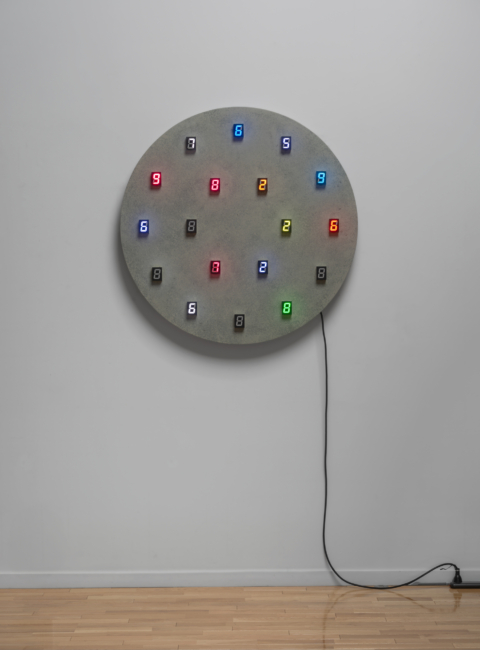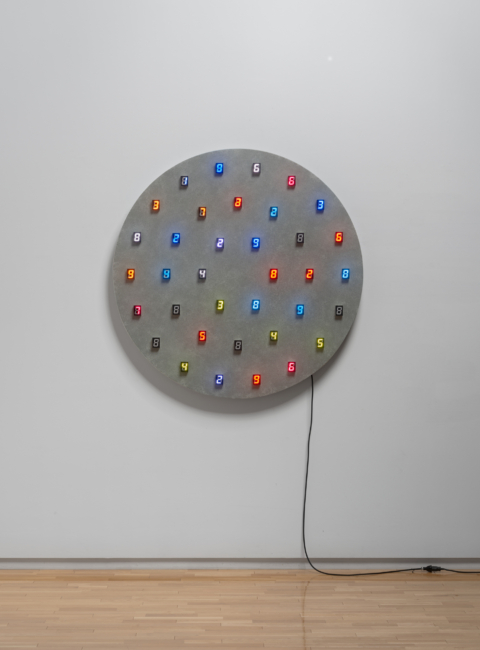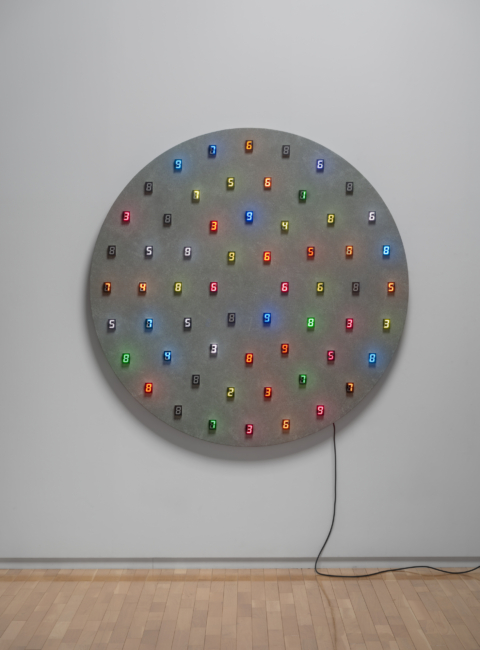Light Emitting Diode, IC, electric wire, specially coated wood panels.
no.2
90.7 x 90.7 x 9.8 cm
18 LEDs
no.3
126.7 x 126.7 x 9.8 cm
36 LEDs
no.4
162.7 x 162.7 x 9.8 cm
60 LEDs
2024
Photo by Nobutada Omote
MUL.APIN refers to the clay tablets that describe Babylonian astronomy and astrology, essentially serving as a form of calendar. In ancient Babylon, the sexagesimal (base-60) system was used, which is believed to have influenced the modern concept of time. The current work is centered on these ancient themes of astronomy and time.
In ancient times, time was synonymous with astronomy (the cosmos). The LEDs used in this work count down from 9 to 1, without displaying 0, and then return to 9, continuing the cycle. The countdown from 9 to 1 represents "life," while the disappearance of 0 symbolizes "death." These two elements are then unified to form "Seimei." Furthermore, after the "death" at 0, the LEDs randomly change colors from a palette of ten, symbolizing the rebirth of "Seimei" in various forms. According to Buddhist scriptures, "Seimei" is said to permeate the cosmos after 0, sometimes appearing in a different form. In other words, the universe is filled with the invisible "Seimei."
The "Seimei" spreading through the cosmos, represented by counting number LEDs, is arranged like the Babylonian clay tablets, following the base-60 system of the clock. This work was created with the theme of connecting the cosmos, "Seimei," and the concept of time, both ancient and modern.
Cf. "Seimei" (生命) refers to the comprehensive idea of life, being, existence and consciousness.



